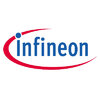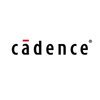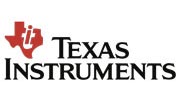


i
Tessolve Semiconductor
Filter interviews by
Tessolve Semiconductor Post Silicon Validation Engineer Interview Questions, Process, and Tips
Tessolve Semiconductor Post Silicon Validation Engineer Interview Experiences
6 interviews found
Post Silicon Validation Engineer Interview Questions & Answers
posted on 4 Apr 2025
I appeared for an interview before Apr 2024, where I was asked the following questions.
- Q1. Showed some circuits and asked the expected results
- Q2. Design XOR gate using normal gate
- Ans.
An XOR gate can be constructed using AND, OR, and NOT gates to achieve the desired output.
XOR outputs true only when inputs differ: A=0, B=1 -> Output=1; A=1, B=0 -> Output=1.
Use two AND gates, one OR gate, and two NOT gates to create the XOR function.
The expression for XOR is: A XOR B = (A AND NOT B) OR (NOT A AND B).
Example: For inputs A=1, B=0, NOT B=1, NOT A=0; thus, (1 AND 1) OR (0 AND 0) = 1.
I applied via Referral and was interviewed before Nov 2023. There were 2 interview rounds.
(2 Questions)
- Q1. Related to the op amp circuit outputs
- Q2. Flip flops related basic questions
(2 Questions)
- Q1. Digital circuits basics
- Q2. Analog circuit op amp and diode basics
Interview Preparation Tips
- Digital circuit
- analog circuit
- network theory
I applied via Recruitment Consulltant and was interviewed in Oct 2022. There were 5 interview rounds.

First round is Online technical assignment.
(2 Questions)
- Q1. Through team call they will take your interview.
- Q2. Your final year project, any work experience, analog, digital, basic circuit switch(like bjt,MOSFET,diode,inductor, capacitor) knowledge and problem.
(1 Question)
- Q1. Same thing but higher authority will take your interview.
(1 Question)
- Q1. About salary discussion.
Interview Preparation Tips
Post Silicon Validation Engineer Interview Questions & Answers
posted on 1 Mar 2024
I applied via LinkedIn and was interviewed before Mar 2023. There were 2 interview rounds.
(4 Questions)
- Q1. Characteristics of diod, Amplifier,RLC circuits, Digital an Analog electronics from basics to advanced level questions
- Q2. What is op amp and it's applications
- Ans.
Op amp stands for operational amplifier, used in various electronic circuits for amplification, filtering, signal conditioning, etc.
Op amp is a high-gain electronic voltage amplifier with differential inputs and single output.
It is commonly used in audio amplifiers, signal conditioning circuits, filters, oscillators, etc.
Op amps can be used in instrumentation amplifiers, voltage followers, integrators, differentiators,...
- Q3. Input Voltage is 50v,I want 20v at output design a circuit
- Q4. Input fre is 50MHz and I want half of the frequency at output design the circuit
- Ans.
Use a flip-flop to divide the frequency by 2.
Use a D flip-flop with the input connected to the clock signal and the output connected back to the D input.
The output frequency will be half of the input frequency (25MHz).
(1 Question)
- Q1. In detail explanation of every concept.
Interview Preparation Tips
Tessolve Semiconductor interview questions for designations
I applied via Campus Placement and was interviewed before Jan 2023. There were 2 interview rounds.
Circuit theory, networks, Diode, Digital, Opamp
(5 Questions)
- Q1. Basics of analog 0and digital
- Q2. Types of clipper circuit
- Ans.
A clipper circuit is an electronic circuit that limits or clips the voltage level of a waveform.
There are two types of clipper circuits: positive clipper and negative clipper.
Positive clipper circuit limits the positive half of the input waveform.
Negative clipper circuit limits the negative half of the input waveform.
Diodes are commonly used in clipper circuits to perform the clipping operation.
Examples of clipper circ...
- Q3. Types of clamper circuit
- Ans.
A clamper circuit is used to shift the DC level of a signal without changing its shape.
Positive Clamper: shifts the DC level of the input signal to a higher level
Negative Clamper: shifts the DC level of the input signal to a lower level
Biased Clamper: shifts the DC level of the input signal to a desired level using a biasing voltage
Diode Clamper: uses diodes to clamp the input signal to a specific DC level
- Q4. Clipper with the help of opamp
- Ans.
Clipper with the help of opamp is a technique used to limit the output voltage of a signal.
Clipper circuit is used to limit the voltage level of a signal by clipping off the peaks.
Opamp (operational amplifier) is a high-gain electronic amplifier used to amplify and manipulate signals.
By combining a clipper circuit with an opamp, the opamp can be used to control the clipping level and shape the output signal.
The opamp c...
- Q5. Clamper with transistor
- Ans.
A clamper circuit is used to shift the DC level of a signal.
A clamper circuit consists of a diode and a capacitor.
It is used to add or subtract a DC voltage to a signal.
The transistor can be used in a clamper circuit to control the clamping voltage.
The transistor acts as a switch to control the charging and discharging of the capacitor.
Example: A clamper circuit with a transistor can be used to shift the DC level of an...
Interview Preparation Tips
Get interview-ready with Top Tessolve Semiconductor Interview Questions
I applied via AmbitionBox and was interviewed before Feb 2023. There were 2 interview rounds.
Digital Fundamentals.
Transistor with Relay circuit.
(1 Question)
- Q1. Transistor with relay circuit I2C C++
Interview Preparation Tips
Top trending discussions






Interview questions from similar companies

Post Silicon Validation Engineer Interview Questions & Answers
Advanced Micro Devicesposted on 8 Jul 2024
(1 Question)
- Q1. MB cells advantage
- Ans.
MB cells advantage lies in their ability to provide high accuracy and efficiency in post silicon validation testing.
MB cells offer high accuracy in detecting defects in silicon chips
They provide efficient testing solutions for post silicon validation
MB cells help in identifying and resolving issues in the design and manufacturing process

Interview Preparation Tips
Experience: It contained 3 sections: Aptitude Questions, Programming questions and third section depending on which profile the candidate is opting for, which contained CS,VLSI or DSP profile. Programming: Pseudo code questions which required to find the output of code or the code which resulted in specific output.
Tips: Answer all questions since there was no negative marking (at least this time).
Round: Technical Interview
Experience: I had three interviews out of which the first two were technical and third H.R. The interview started with a personal question. Then I was aked about my project in detail. Knowing what projects you did and basic details which constitute the base of the project is must. The next question was about designing a FSM. And the following interview was based on general VLSI based questions mainly setup-hold time, power consumption reduction techniques etc and some puzzles.
Tips: Knowing the basics about subjects and projects is most important.
General Tips: High CGPA is helpful but your answers in interview are
more important.
Skill Tips: For VLSI part a HDL is needed and knowing software related to VLSI CAD is added advantage. Also good logical ability and problem solving skill helps since they ask puzzles and digital design problems.
Skills: HDL
College Name: IIT Kharagpur

Interview Questionnaire
3 Questions
- Q1. CMOS circuit power, Computer architecture: Pipelining and Parallelism
- Q2. Verilog basic knowledge: Language to H/W mapping.
- Q3. What is your pas- sion and what is that you did for it.
- Ans.
My passion is photography. I love capturing moments and telling stories through my photos.
I have been taking photos since I was a teenager
I have taken photography classes and workshops to improve my skills
I have participated in photography competitions and exhibitions
I have worked as a freelance photographer for events and portraits
I have a portfolio of my work on my website and social media
Interview Preparation Tips
Experience: Tell me about yourself: tell something special about yourself and make yourself proud. Setup time and hold time Digital design, Combinational and sequential circuits design(thorough understanding of design steps) were some of the questions. appeared for VLSI written test. They expected very basic knowledge in Digital, analog, communication subjects. CAT type of questions and very basic Computer programming questions (Three sections each about 15-20 questions). Online test was very easy, so I think cutoff was high.
Tips: Be calm, relaxed and answer questions thoughtfully Attention to instructions is important.
Total Questions: 60
Round: Interview
Experience: Interview was completely oriented on Job profile: digital VLSI and some personal questions.
Tips: Be confident. Be clear in your answers and proper explanation to it. Take your time to think and act. If you don’t know something accept it. More importantly wear smile on your face. This automatically brings confidence within you.
Round: Interview
Experience: Some more VLSI design questions. Personal questions too.
Tips: Think and answer. Both Interview panels were very cool and calm. Take your time to think and answer.
Round: Interview
Experience: This was very formal interview. Not much to say.
Tips: Show your keen interest to know more about the company and activi-ties, corporate life, your work in company.
General Tips: Technology initiative and leadership. Good Academics really help a lot in the interview (There was no CV submission till we qualify Written test) Most important is a thorough preparation: Start as early as possible atleast in Mid of Oct./first week of Nov. starting from good CV preparation to brushing up and thorough understanding of all important subjects for Technology companies you are targeting.
Skill Tips: Good academic records. CGPA criteria for Qualcomm was 8 and they were very strict about CG cutoff. A thorough subject preparation. Be mentally prepared for HR questions. Be focused till you actually have offer in your hand. Tech events, Leadership qualities like positions in Hall, Gymkhana etc. in Tech committees would help a lot for these Technology companies. Qualcomm HR clearly mentioned they need candys who can take initiative, self motivated and more inclined to technology leadership and achievements.
College Name: IIT KHARAGPUR

Interview Preparation Tips
Experience: Online test consists of 3 parts:
1) Aptitude
2) programming (C/C++, Data Structures)
3) Technical.
No negative marking. Apti and programming parts were easy. There were three different technical sections forthree different profiles: 1) Hardware 2) Communication/DSP 3) Software.I appeared for 2nd profile. In this, the technical section had question mostly from DSP, few from communication, analog circuits, digital circuits etc. Each section was given different amount of time. Time for the Technical section was less and I felt that this section was the deciding factor in short listing. There was a CGPA cutoff of 7.5 . My CGPA was 8.75.
Round: Interview
Experience: There were 3 rounds of interview out of which 2 were technical and 1 was HR round. Asked about thesis, term papers, trainings, and question on Digital logic circuits: to design FSM, designing simple logic circuits, delay & its calculation in the digital circuit, MOS etc. Few communication related questions, some puzzles and apti questions. In HR, they asked common HR questions like about yourself, Why qualcomm, training experience, any specific location preference etc. both the technical rounds were almost 40 minutes long and HR was 20 minutes.
General Tips: 1) Should be clear about your M.Tech thesis, B.Tech project, summer training, Term papers. Understand their terminologies and concepts since almost all companies ask about it.
2) For aptitude preparation, solve the material available in preparation portal, can see for online aptitude tests and puzzles and along with that appear honestly in the mock tests organized by SPO. Aim on accuracy and speed.
3) For Programming preparation, revise basic concepts of C and DS, you can use book by Denis Ritche, Yeshwant Kanetkar. Solve online mock programming tests, so you get aware of standard questions andmost common mistakes. Try to write some codes while preparing so that you will be confident writing infront of interviewer, especially of DS like linked list, trees, sorting, searching etc. I did not prepare for OS,but most of the software companies do ask questions on it. Galvin is the standard book for OS.
4) Technical: very vast field includes all the course and practical knowledge you have been studying. Basicconcepts should be clear. Prepare Digital circuit design, Communication, Wireless Communication, DSP,
Computer networks, and most importantly subjects of your interest
5) Do prepare in groups, it will help you in clearing your doubts and also it will improve your interview skills. Mock interviews are also organized for your confidence building.
College Name: IIT KANPUR
Tessolve Semiconductor Interview FAQs
Tell us how to improve this page.
Tessolve Semiconductor Interviews By Designations
- Tessolve Semiconductor Test Engineer Interview Questions
- Tessolve Semiconductor Post Silicon Validation Engineer Interview Questions
- Tessolve Semiconductor Design & Verification Engineer Interview Questions
- Tessolve Semiconductor PCB Design Engineer Interview Questions
- Tessolve Semiconductor Software Engineer Interview Questions
- Tessolve Semiconductor Associate Engineer Interview Questions
- Tessolve Semiconductor Design Engineer Interview Questions
- Tessolve Semiconductor Mechanical Engg. Design Interview Questions
- Show more
Interview Questions for Popular Designations
- Embedded Engineer Interview Questions
- Design & Verification Engineer Interview Questions
- Verification Engineer Interview Questions
- Physical Design Engineer Interview Questions
- Embedded Developer Interview Questions
- Embedded Firmware Engineer Interview Questions
- Embedded Systems Engineer Interview Questions
- Physical Design Engineer Trainee Interview Questions
- Show more
Tessolve Semiconductor Post Silicon Validation Engineer Interview Process
based on 6 interviews
1 Interview rounds
- Technical Round
Interview Questions from Similar Companies
Fast track your campus placements

Tessolve Semiconductor Post Silicon Validation Engineer Reviews and Ratings
based on 32 reviews
Rating in categories
|
Post Silicon Validation Engineer
183
salaries
| ₹4 L/yr - ₹16 L/yr |
|
Design Engineer
133
salaries
| ₹2.6 L/yr - ₹12.3 L/yr |
|
Test Engineer
110
salaries
| ₹3 L/yr - ₹10 L/yr |
|
Senior Design Engineer
92
salaries
| ₹6.3 L/yr - ₹26.2 L/yr |
|
Software Engineer
89
salaries
| ₹2.1 L/yr - ₹11.3 L/yr |

Qualcomm

Infineon Technologies

Advanced Micro Devices

Cadence Design Systems
- Home >
- Interviews >
- Tessolve Semiconductor Interview Questions >
- Tessolve Semiconductor Post Silicon Validation Engineer Interview Questions















